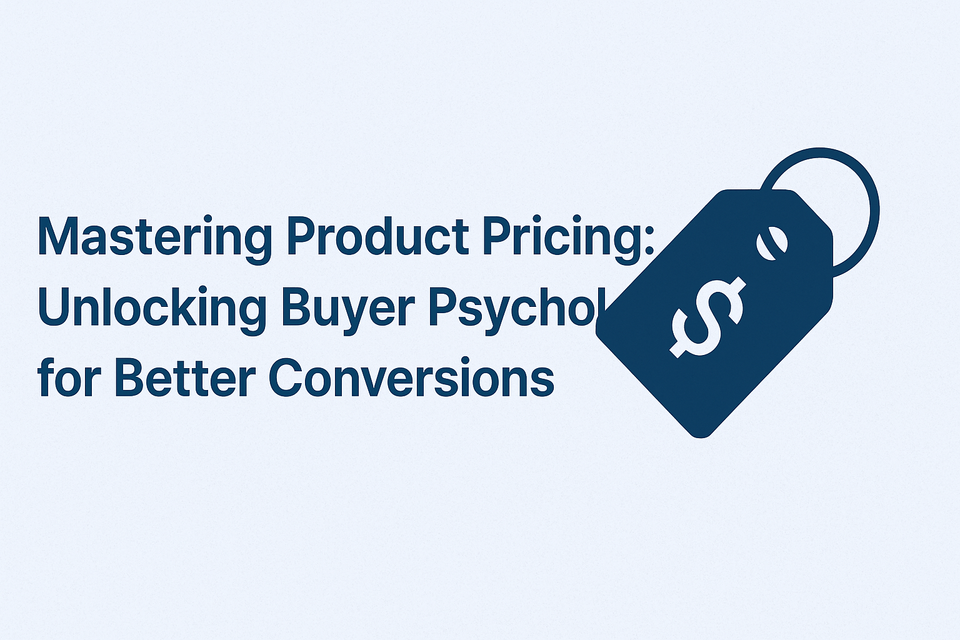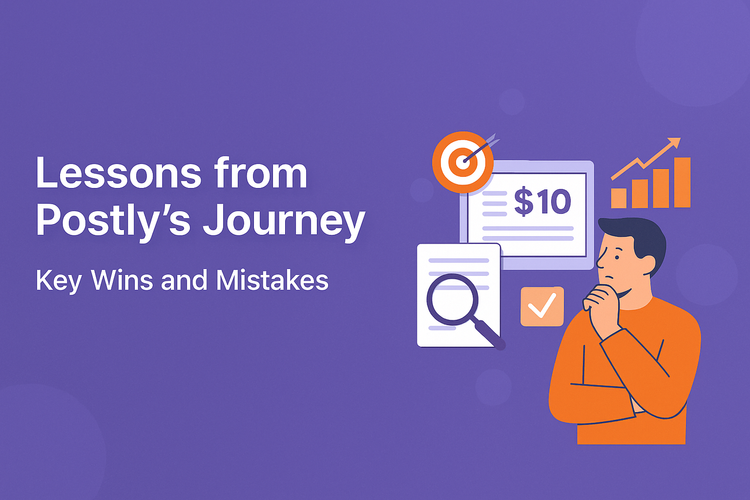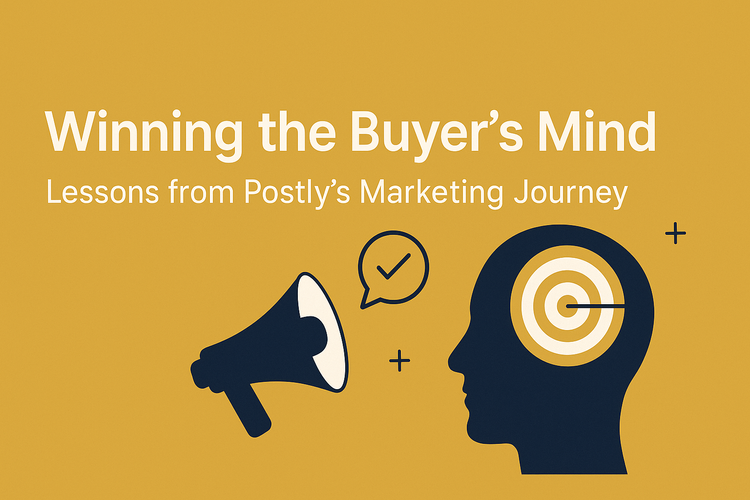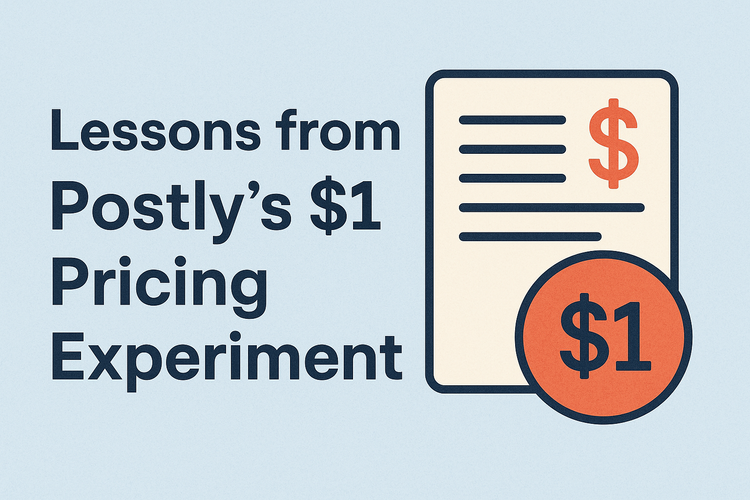Mastering Product Pricing

How Buyer Psychology Can Skyrocket Your Pricing Strategy
Pricing isn’t just a number—it’s a psychological game. Understanding how customers think can transform your pricing strategy, driving more sales and loyalty. Let’s explore proven tactics, grounded in psychology, with real-world examples to help you price effectively.
1. Anchor Prices to Influence Choices
Why It Works: Anchoring bias makes people judge prices based on the first number they see. A high-priced option makes others seem like bargains.
How to Do It: Offer tiered pricing with a premium option as the anchor to make mid-tier plans look appealing.
Example: Apple’s iPhone Pro sets a high anchor, making the standard model seem like a steal.
Result: The Journal of Consumer Research found anchoring boosts mid-tier sales by making them feel like better value.
Don’t: Avoid single price points—without a comparison, customers hesitate.
Streamline Social Media with Postly!
Publish effortlessly across hundreds of channels with Postly.
Try Postly Now2. Use Loss Aversion to Spur Action
Why It Works: Loss aversion means people fear missing out more than they crave gains. Highlighting losses creates urgency.
How to Do It: Frame deals to show what they’ll lose, like “Save $50 now, or pay more later.”
Example: Booking.com’s “Only 1 room left!” pushes users to book fast.
Result: The National Bureau of Economic Research says loss-framed messages can increase conversions by 9%.
Don’t: Don’t fake scarcity—overuse erodes trust.
3. Add Urgency with Scarcity
Why It Works: Scarcity makes items feel more valuable, and urgency speeds up decisions.
How to Do It: Use limited-time offers or low-stock alerts, like countdown timers.
Example: Amazon’s Lightning Deals create urgency with timers and limited units.
Result: Harvard Business Review found scarcity increases purchase likelihood by 30%.
Don’t: Avoid fake scarcity tactics—they damage your reputation.
4. Trick the Mind with Charm Pricing
Why It Works: Charm pricing (e.g., $9.99) makes prices feel lower by focusing on the leftmost digits.
How to Do It: Set prices at $19.99 instead of $20 for a budget-friendly vibe.
Example: JCPenney prices items at $49.99 to attract cost-conscious buyers.
Result: A University of Chicago study shows charm pricing lifts sales by 24%.
Don’t: Don’t use charm pricing for luxury goods—rounded numbers like $1,000 feel more premium.
Grow Your Social Media Reach
Thousands of teams trust Postly to manage their social media.
Get Started Today5. Make Discounts Work Smarter
Why It Works: People love instant rewards (temporal discounting). Time-limited discounts push faster purchases.
How to Do It: Offer discounts during sales seasons or after cart abandonment.
Example: Sephora’s limited-time offers for Beauty Insiders drive quick sales.
Result: Deloitte found 83% of consumers buy more with time-sensitive discounts.
Don’t: Don’t over-discount—it makes customers wait for sales, hurting value perception.
6. Sell Value, Not Price
Why It Works: Value-based pricing focuses on benefits, not just cost, making the price feel justified.
How to Do It: Emphasize outcomes—like how a fitness tracker boosts health—not the price.
Example: Tesla highlights long-term savings and sustainability over upfront cost.
Result: Tesla dominates the EV market by focusing on value, not price wars.
Don’t: Don’t compete on price alone—it devalues your product.
7. Leverage FOMO with Social Proof
Why It Works: The bandwagon effect makes people follow the crowd, especially if they fear missing out (FOMO).
How to Do It: Use social proof, like “85% of users chose this plan,” to drive action.
Example: Groupon’s “90% bought this deal” messaging creates FOMO.
Result: Psychology & Marketing found FOMO boosts engagement by 27%.
Don’t: Don’t fake social proof—it can ruin trust.
Simplify Your Social Media Workflow
Explore Postly’s bundled plans starting at $16/month.
Learn More8. Match Pricing to Your Brand Image
Why It Works: Price signals your product’s position—luxury, premium, or budget.
How to Do It: Price high for premium products to reinforce exclusivity.
Example: Louis Vuitton’s high prices cement its luxury status.
Result: Louis Vuitton remains a top luxury brand with strong margins.
Don’t: Don’t misalign pricing—low prices on high-end products confuse buyers.
9. Boost Value with Smart Bundling
Why It Works: Bundles offer discounts on combined products, appealing to deal-seekers.
How to Do It: Create logical bundles, like a meal combo with fries and a drink.
Example: McDonald’s combo meals increase order value while offering savings.
Result: Fast-food chains see higher revenue through bundling.
Don’t: Don’t bundle unrelated items—it reduces perceived value.
Pricing Pitfalls to Avoid
- Don’t Overcomplicate: Simple pricing prevents decision fatigue and cart abandonment.
- Don’t Over-Discount: Constant sales devalue your product and delay purchases.
- Don’t Fake Urgency: Authentic scarcity builds trust; fake tactics break it.
Freemium vs. Free Trials: Which Converts Better?
SaaS companies often debate freemium vs. free trials. Both attract users, but their psychological impact differs.
Freemium: Why It Falls Short
Freemium offers a free, limited version, hoping users upgrade. But many stay complacent, convincing themselves the free plan is enough due to cognitive dissonance.
Postly’s freemium experiment had low conversions—users rarely upgraded, feeling the free version sufficed.
Free Trials: Harnessing Loss Aversion
Free trials provide full access for a short time, using prospect theory—people fear losing benefits more than they value gains. This drives upgrades.
Postly’s 7-day trial outperformed a 14-day one, as the shorter window increased urgency and conversions.
Why Free Trials Excel
Free trials create ownership (endowment effect), making users reluctant to lose features. Freemium doesn’t build the same attachment. Trials also set a higher anchor, making paid plans feel natural, while freemium makes them seem expensive.
Conclusion: Price Smarter with Psychology
Pricing is a psychological tool. Free trials often beat freemium by leveraging urgency and ownership. Tactics like anchoring, scarcity, and value messaging can further boost conversions. For SaaS companies like Postly, understanding buyer psychology turns pricing into a growth engine.





Member discussion